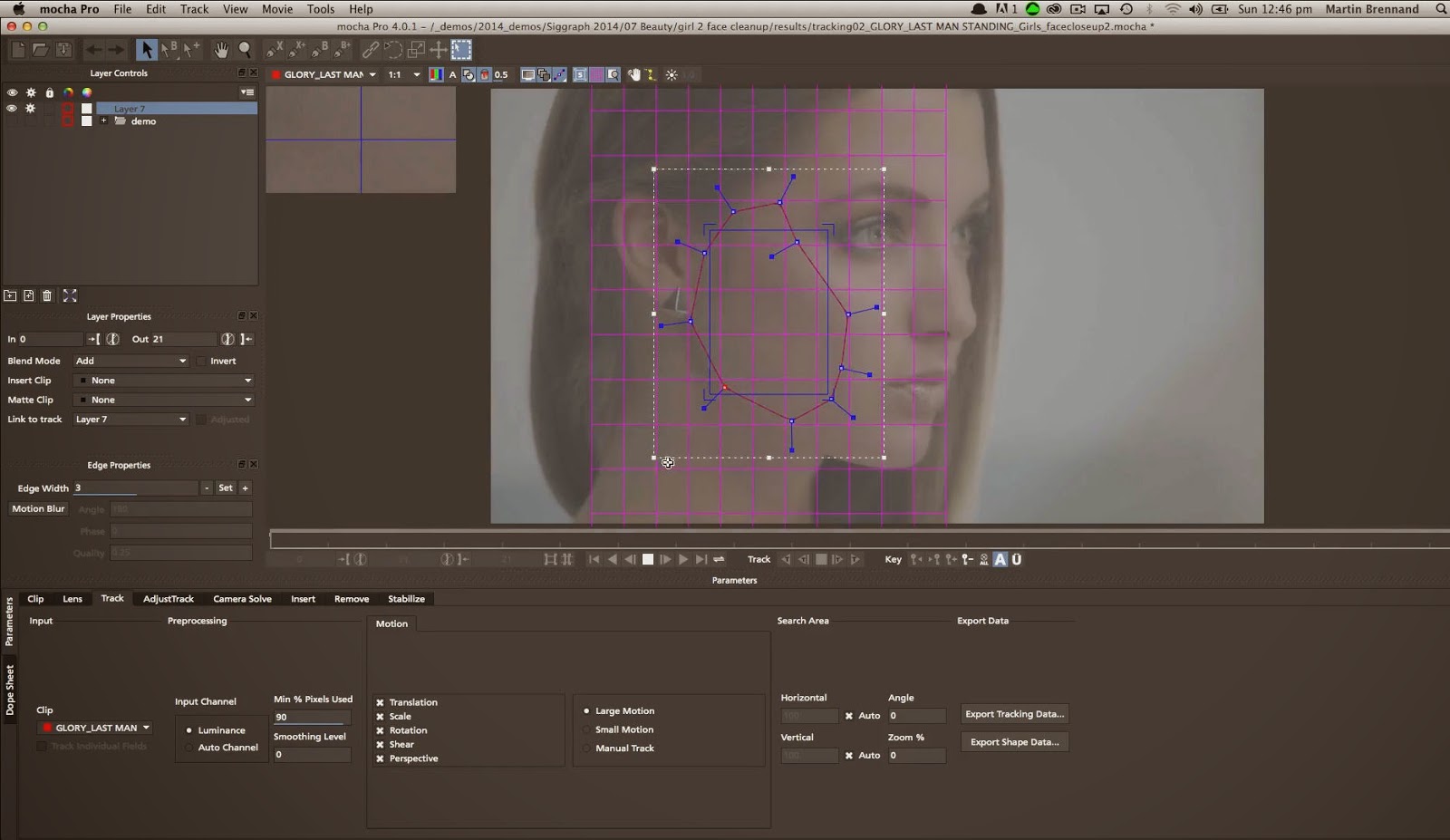

- MOCHA PRO CAMERA SOLVE HOW TO
- MOCHA PRO CAMERA SOLVE SOFTWARE
- MOCHA PRO CAMERA SOLVE PLUS
- MOCHA PRO CAMERA SOLVE FREE
Once inside of Mocha Pro 4.1, I immediately went to the frame that contained the most surface area of the object that I wanted to track. Mocha does a great job at matching the project specs to the clip you import, just be sure to double check because you don’t want to do all that roto work at an HD resolution when you should be working at 4K, or working at 23.976 when you should be working at 59.94 fps.

I brought the shot into Mocha Pro 4.1, which is a stand-alone program. I found a shot that was tricky to track with a point tracker because it had a rack focus and would lose its way once the focus started to shift. (If you haven’t signed up, head over to their site now and check back monthly for three royalty free, zero cost, HD stock footage clips per month - they work great for testing out products or even using in your own work.)
MOCHA PRO CAMERA SOLVE FREE
To test out Mocha Pro 4.1’s features I went to and downloaded their free stock footage clips of the month.
MOCHA PRO CAMERA SOLVE HOW TO
In fact I would argue it’s easier to use (and more accurate) than most other trackers you may have used inside of an NLE or VFX software… once you understand how to use it. Mocha is not as difficult to use as you might think.
MOCHA PRO CAMERA SOLVE SOFTWARE
I have to admit I was intimidated because it sounded like an entire new piece of software I had to learn, and since I was still trying to get comfortable inside of After Effects I stayed within AE using the built-in tracker and now the 3D camera solver - but that was a mistake.

I first heard of Mocha Pro a few years ago when it came bundled with After Effects. If the last few sentences threw you off a little, don’t fear it gets easier and more fun - just stay with me.Īs an editor, I use trackers for stabilizing footage, replacing signs on buildings, removing (rotoscoping) production gear from a shot or even replacing someone’s eyes with a scary set of red monster eyes from, let’s say, Rampant Design Tools Monster Toolkit! Anytime you need to add something to a scene (text, objects, etc.) while retaining natural camera shake and movement, you will most likely use some sort of tracking software. Unlike most point trackers, planar trackers can have part of the track go off screen while continuing to hold their track (a very handy feature). Planar trackers, such as Mocha Pro, use very wide search areas that constantly calculate where the object specified is in relation to the previous and the next frame of video. Point trackers follow one or a couple of points selected by the user within a small search area. Planar tracking is not a single point tracker, which is probably what most editors are used to. What is planar tracking (or what ISN’T planar tracking)?
MOCHA PRO CAMERA SOLVE PLUS
After reading this review go check out the Mocha Fundamentals series of videos. Those will get you started relatively quickly.įor this review of Imagineer Systems’ Mocha Pro 4.1 and Mocha Plus 4.1 I will touch on a few of the latest advances in planar tracking software as well as share some tips that may get you started and working faster. If you haven’t touched a tracker and/or are scared, I don’t blame you it’s not necessarily a painless procedure (especially if you don’t have great source footage), but stick with it because the results of a great track, along with some creative motion graphics creativity, can be mind bending. If you are lucky enough to have been successful in your standard Avid tracker or the amazing Adobe After Effects 3D Camera Solver then you will love what Imagineer System’s is doing with Mocha Pro 4.1 and Mocha Plus 4.1.
Most people working in modern post production have heard about “tracking.” Many may have even dabbled in a little tracking to remove a dead pixel, do some simple sign replacements or stabilize a shaky shot.


 0 kommentar(er)
0 kommentar(er)
